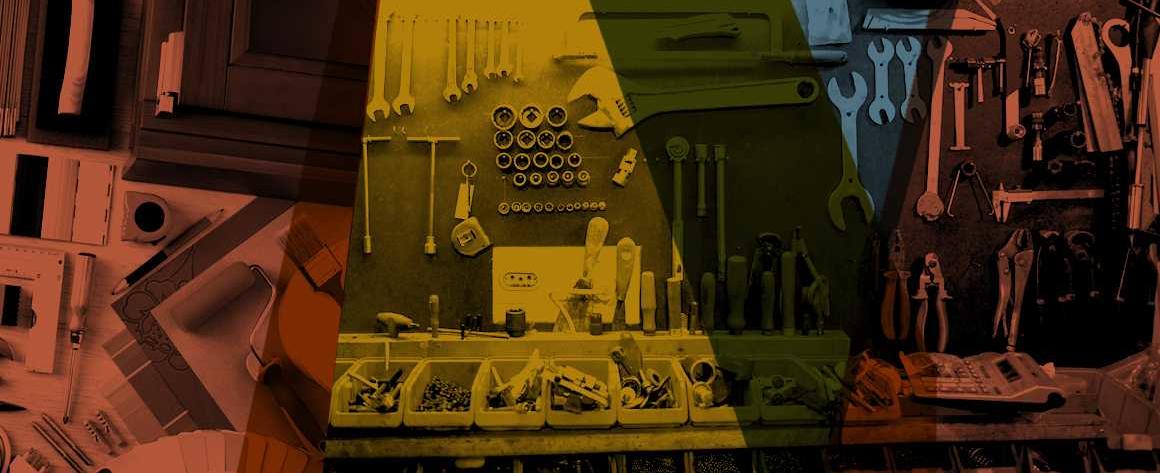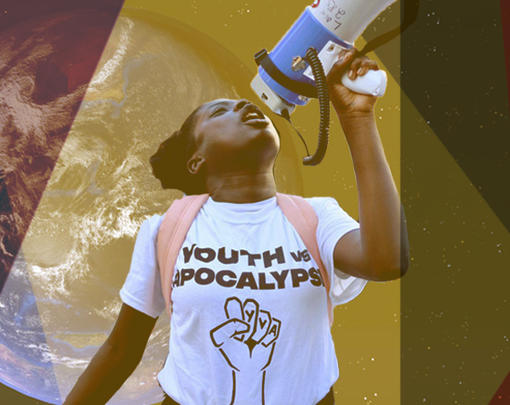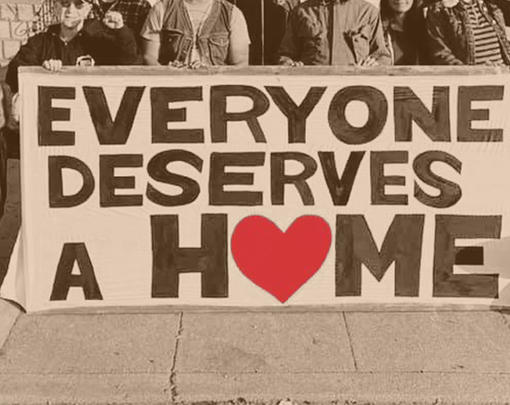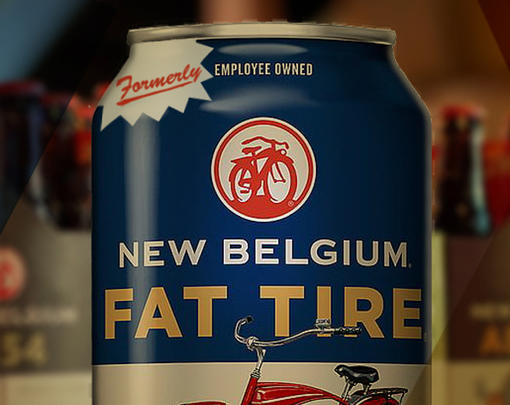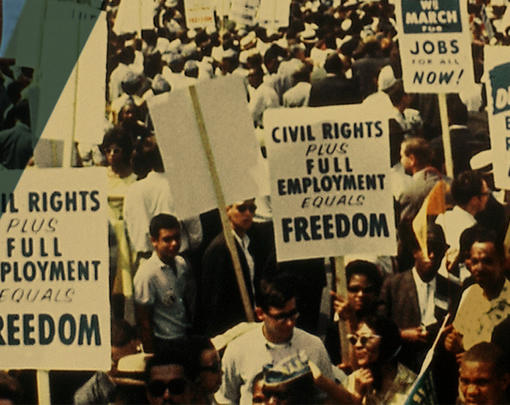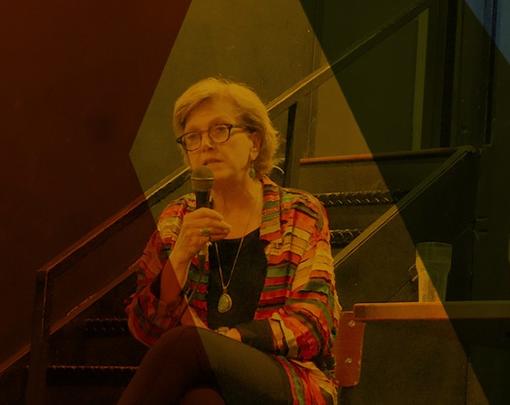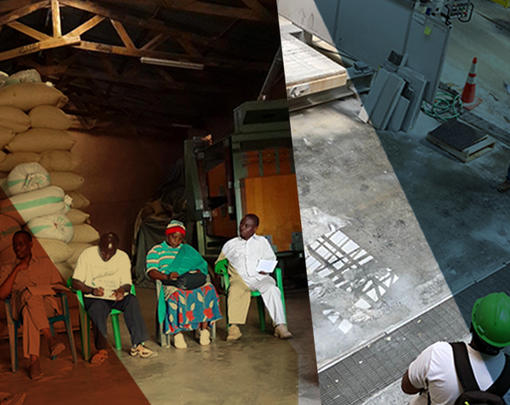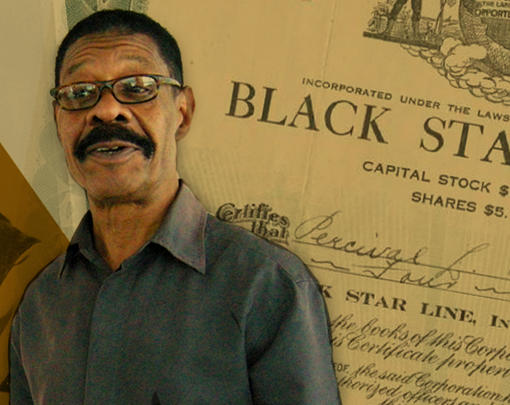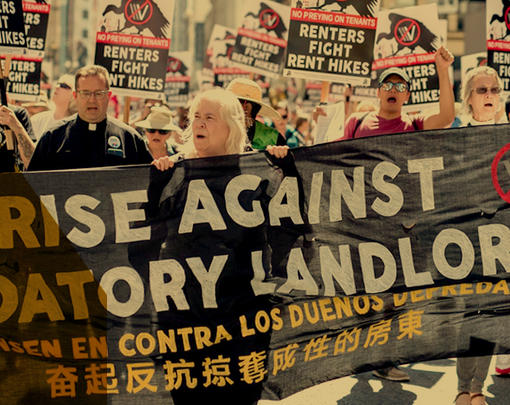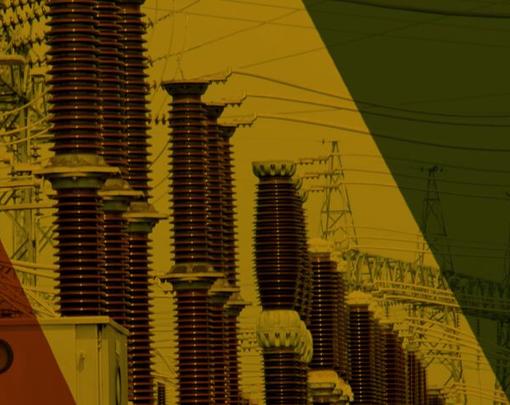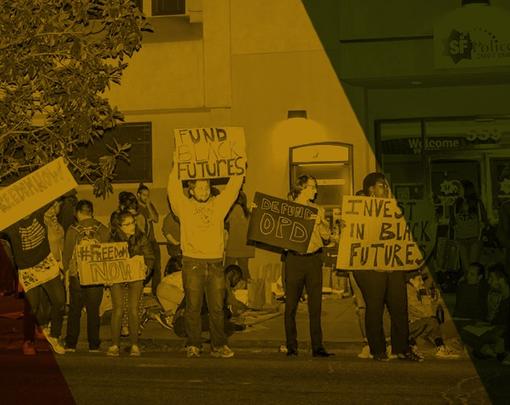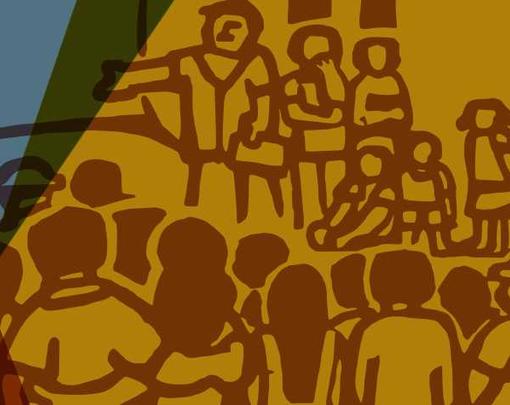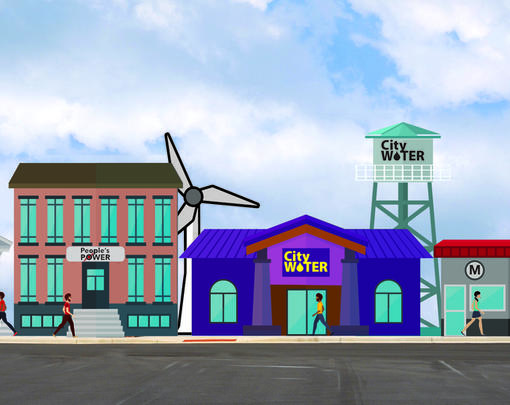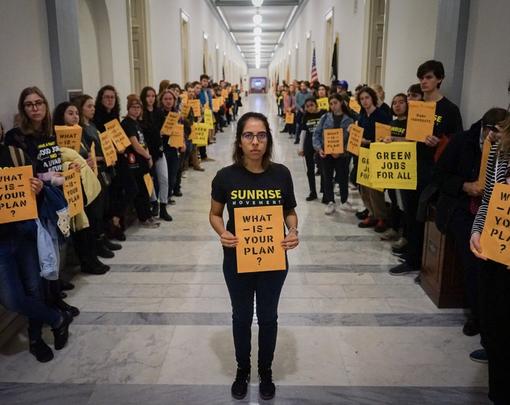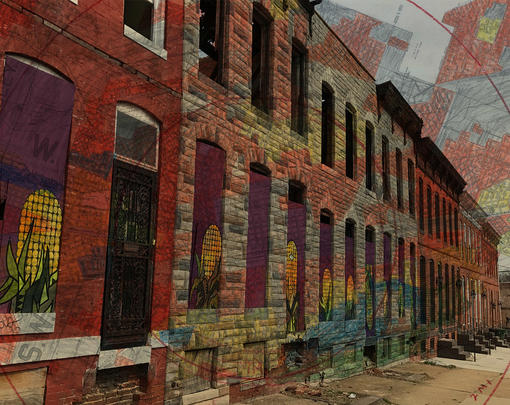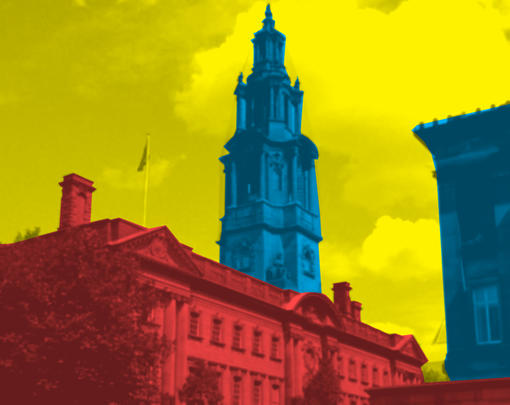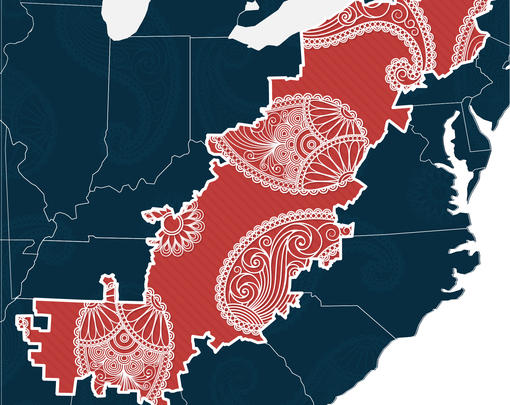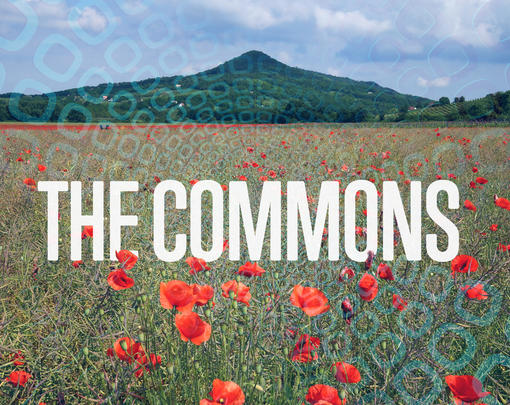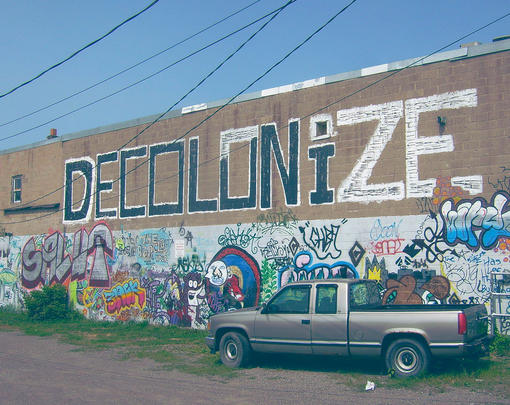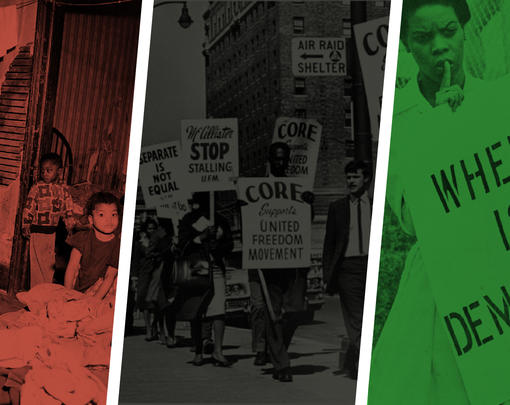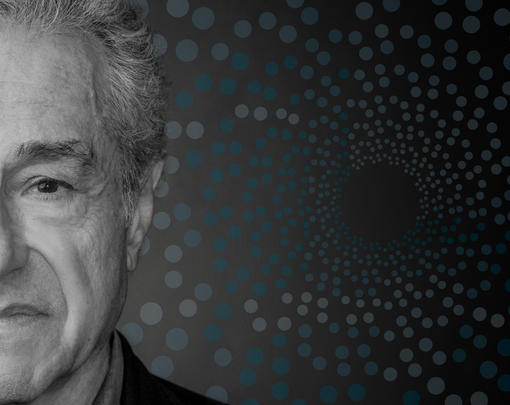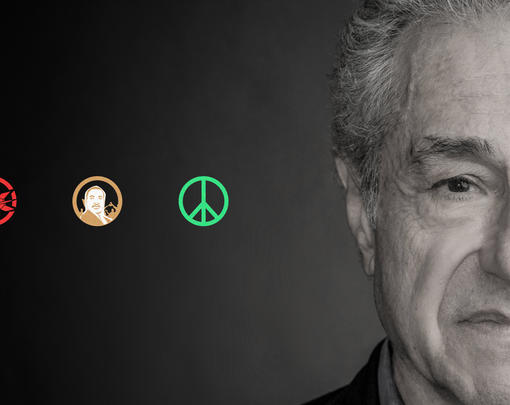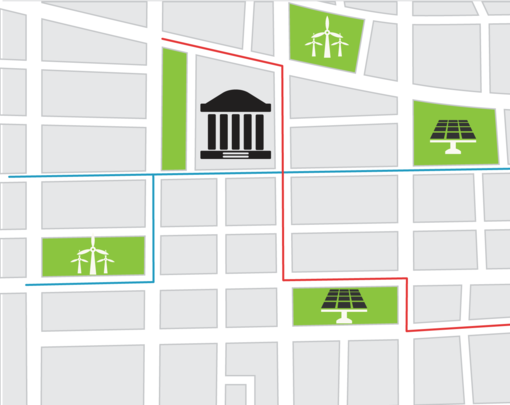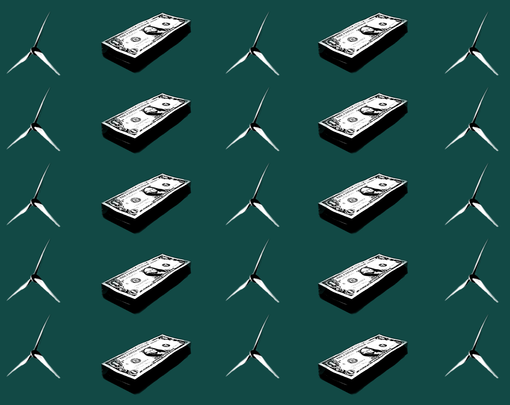One of the key points of contention in the Democratic primary race is defining what policies and proposals are “radical” and which are “pragmatic.” One primary contender went so far as to dismiss a so-called radical agenda as “wish-list economics.” This week Adam Simpson speaks to thought leaders across The Democracy Collaborative and Next System Project to find out precisely what should be on a “wish list” for economic transformation. The conversation this week ranges from housing to healthcare to finance to climate change and beyond—and why that transformation in those sectors is more practical than moderates are willing to admit.
The Next System Podcast is available on iTunes, Soundcloud, Google Play, Stitcher Radio, Tune-In, and Spotify. You can also subscribe independently to our RSS feed here.
Adam Simpson: “Fairy-tale economics.” “Radical.” “Extreme.” “Voters want real solutions, not impossible promises.” “Wish-list economics.”
It’s easy to see from the Democratic presidential primary that the party is currently trying to figure out what it stands for and what policies it represents. Ostensibly, the debate is about what kinds of policies that a candidate must champion or must forswear if they want to appear “electable” in a national presidential race. But more critically, this debate is about determining how far is too far, and how much change political elites are willing to entertain.
But the notion of wish-list economics is one that has been lurking around in my brain since I first heard it deployed in order to discredit a transformative progressive agenda. It made me wonder what such a wish list might look like. So I began talking to some of my colleagues to see if they had a wish list. Turns out…
Johanna Bozuwa: Oh, yeah, I got a wish list.
Adam Simpson: … they responded pretty enthusiastically. I asked for one or two transformative ideas, and, well…
Thomas Hanna: The seventh thing on my policy wish list…
Adam Simpson: … don’t worry, we’ll get there.
In this episode, we’re interrogating our own agenda of wish-list economics, policy proposals that would result in deep transformations for the American economy, and why that agenda is more pragmatic than critics give it credit for.
First we’re talking with Thomas Hanna, co-director of The Democracy Collaborative’s Theory Research and Practice Division. For the progressive candidates in the 2020 race, one of the key issues is that of inequality of both wealth and power. And when thinking about how concentrated wealth and power are in the United States, we have to focus on the concentration of ownership.
Thomas, your work focuses on proposals for publicly owned, democratically governed and managed institutions. Can you tell us a little bit of what your policy wish list might look like?
Thomas Hanna: I think I may have a pretty extensive policy wish list at this point, but I think I’ll start with the two crises that I see impending on our horizon. The first one is the financial crisis, and I think Elizabeth Warren in one of the debates had it right on. She warned that there’s another financial crisis coming, and we’re now 10 years on from the 2009 financial crisis, and historically financial crises happen roughly every 10 years. So we’re due for another financial crisis, and I think next time there is a financial crisis, we really don’t have a plan for what to do when the large, still too-big-to-fail financial institutions go crashing down again and come asking for a handout.
So, the first item on my policy wish list would be a plan for taking over and essentially nationalizing the big Wall Street banks next time there’s a financial crisis and the next time they come with their hands out asking for bailout money from the government.
The second thing on my policy wish list, right, so the climate crisis. I think it’s absolutely imperative to buy out and decommission the fossil fuel companies as soon as possible. A second aspect of this related to the climate crisis is supporting the municipalization of electric utilities. So taking electric utilities, for-profit electric utilities around the country, into public ownership as a way of mitigating the climate crisis.
A third on my policy wish list is getting rid of some of the state preemption laws on municipal broadband. Essentially what’s been happening around the country in recent years is there’s been a large scale expansion of publicly owned municipal internet networks, and this is because the for-profit internet companies, the cable companies, they really just don’t want to go into areas and provide affordable high-speed internet in rural areas, poorer areas, so on and so forth. So a lot of cities and communities have been setting up these publicly owned municipal broadband networks.
However, the corporations have been going to the state level, to the state legislatures where they have a lot more influence, and getting preemption laws put in place to stop local communities from experimenting with municipal broadband or co-ops and things like that. So I think the federal government through the FCC needs to get rid of some of these preemption laws to allow for local experimentation in the internet sector.
The fourth on my policy wish list is to really support the post office. What we’ve seen in the past decade or so is a very concerted corporate and Republican attack on the publicly owned post office. They’re under a requirement to pre-fund their pension obligations I think something like 75 years into the future, something that no other company or agency has that same obligation. It’s a deliberate attempt to bankrupt the post office as a precursor to privatization.
So I think supporting the post office is especially important, and part of supporting the post office may actually be expanding to postal banking as well. There’s been some legislation introduced in recent years, I think [Vermont Sen. Bernie] Sanders, [New York Sen. Kristen] Gillibrand, and others, to do postal banking. Postal banking is something that happens in many systems around the world. It essentially allows you to use the scope and the scale and the dispersion of the post office and all of its facilities to provide basic banking services to underbanked communities around the country. It also provides a source of revenue that could help stabilize the post office and public ownership for the long term.
The fifth thing on my policy wish list is outright banning water privatization in the United States. Water privatization was a big thing in the 1990s and early 2000s. It’s been kind of reversed at local level in recent years because it’s been kind of a disaster.
The sixth thing on my policy wish list is really enhanced scrutiny and oversight of public-private partnerships. These are the systems by which local and state governments fund infrastructure nowadays. They get private corporations to come in and to basically build the infrastructure or to provide some sort of payment for the infrastructure in exchange for these very long-term leases, and it’s very exploitative, and it’s very bad for the long term. It’s very short-term thinking in many places.
So I think there needs to be definitely enhanced scrutiny and oversight of these public-private partnerships, if not outright outlawing public-private partnerships in their current format. And this accompanies I think a massive reinvestment in public infrastructure that’s needed in this country across all levels of government, from the federal government on down to the local level.
The seventh thing on my policy wish list is massive expansion of Amtrak, our publicly owned rail system, and especially the expansion of high-speed rail. I think this is extremely important in the context of the climate crisis, but also in terms of transportation policy more broadly.
And the last thing I think for now, I’m sure I have many more on this list, but the last thing for now relates to healthcare. The first part of that is I believe that there should be a national health service model in this country, maybe even beyond single-payer. Maybe we need to go to an actual national health service model, a publicly owned model like in the UK.
The second aspect in terms of healthcare is I think that we really need public ownership in the pharmaceutical sector. If you look at the most loathed and hated industries in the United States, health insurance companies and pharmaceutical companies are right there at the very bottom in terms of how Americans view them. I think public production in the pharmaceutical sector as well as a national health service model can deliver improved service and improved health outcomes in the United States for lower costs.
Adam Simpson: Okay. Wow, you really came with the list today. I appreciate that. I want to focus specifically on one aspect of the list, which has to do with democratically controlled financial institutions. What are the broader possibilities that come into play if some of those institutions are realized?
Thomas Hanna: I think people around the country and in every sector, activists on all sort of different campaigns, are beginning to realize especially since the financial crisis 10 years ago that getting control of capital, getting control of finance and democratizing that and putting that to the public interest is really, really crucial. If you don’t have control of finance, our campaigns are going to be very limited in what they’re able to accomplish.
So, I think if you have public ownership in the financial sector, you can deploy that in many interesting ways and for a lot of different possibilities. For instance, for the climate crisis you could set up essentially a green investment bank, a publicly owned investment bank that essentially used to incentivize the development of renewable energy, energy retrofits and all the other things that are needed to rapidly transition our economy and our society away from fossil fuels and to renewable energy. Sen. Sanders has for years introduced legislation for a worker ownership bank or an employee ownership bank, essentially a publicly owned bank that would be directly lending to and incentivizing the creation of democratically owned businesses, worker cooperatives, ESOPs, and so forth.
I think in terms of public banking generally, we need to work from two different angles. On the one hand, we do need to worry about what happens during the next financial crisis and what to do with the large Wall Street banks. We need a plan for a public takeover of the Wall Street banks when there’s a financial crisis from the top down, but we also need to look at what we can do to help public banking thrive from the bottom up, from the local level and the state level. What policies can we put in place that will help public banking advocates and campaigns proliferate and thrive?
A lot of that’s going on now in California. What they found in California was that they attempted in Los Angeles and elsewhere to set up local publicly owned banks, but they realized that they needed to change some state laws, and they needed to go to the state legislature to enact some enabling legislation. I think that we need to focus on that, we need to focus on the state laws to enable public banking, but we also need to focus on maybe some of the federal laws that might enable public banking as well.
Adam Simpson: Now Thomas, some political opponents on both sides of the aisle will deride ideas of public ownership and public banks as “radical.” In general, how do you feel about how ideas like this are derided and undermined as radical in the current discourse?
Thomas Hanna: Well, everything I just listed on that list is not a pie-in-the-sky idea. These are all based in real world examples that exist across the world and throughout US and world history. Public banks, for instance. We have the Bank of North Dakota, which just celebrated its 100-year anniversary just this past weekend here in the United States. We have public banks that exist all throughout the rest of the world. We have the Sparkassen Public Banking System in Germany. We have national-level public banks in many countries.
Adam Simpson: As Thomas said, the item at the top of any progressive’s list for systemic transformation is related to climate change, and to go a bit deeper we’ll turn to Johanna Bozuwa, co-manager of our Climate and Energy program. We have to consider how our economy is imperiling environmental systems across the planet. The Green New Deal is often thought of as a broad set of radical proposals aimed at making the economy more aligned within ecological limits. Johanna, what would you say is your wish list for a Green New Deal?
Johanna Bozuwa: Oh, I got a lot of things we have to do. I mean, we are dealing with a climate crisis. We’ve got 12 years to deal with the realities of climate change and decarbonize, and how do we do that in a way that’s just is a really big question.
So yeah, I got a wish list, and it first and foremost is eliminating fossil fuel extraction. I think the way to do that is to nationalize the fossil fuel industry, which I think some moderates may think of as a wish-list agenda, but it’s just the reality of where we are at this point in time in terms of being able to stop extraction and ensure that we have a just transition. We don’t have what we have right now, where coal miners are literally having to block railways in order to ensure that they can get their pensions from these companies that are getting very nice little bailouts, or big bailouts, that government is funding. So I’d like that to go to the real workers and to people so that we can decarbonize.
Another piece of my wish list is we’ve got these fossil fuel extraction companies that are extracting so much coal, oil, and gas. According to Oil Change International, we’re going to be seeing extraction at rates that will tip us way over the edge. So, we’re dealing with unburnable carbon, and that’s why we need to nationalize the fossil fuel industry.
But there are other players and actors that are exploiting our communities right now and are seriously endangering folks. For instance, utilities stand as a huge impediment, and another part of my wish list is getting rid of investor owned utilities that are exploiting folks. I mean, [Washington governor and Democratic presidential candidate] Jay Inslee just went to one of Michigan’s most polluted zip codes, 48217, where you have Marathon Oil, you have a huge amount of investor owned utilities that are there with coal, oil, and gas, and all that pollution is going to and affecting low-income communities first because that’s what’s cheapest and that’s the way to do it from a corporate perspective.
We’re seeing things like Con Edison in New York shutting off power to low-income communities first in Brooklyn so that they can keep the lights on in Williamsburg. These are the things that we absolutely need to change, and why we need publicly owned utilities. We need people to be able to liberate themselves from these dirty, exploitative companies so that we can actually be in charge of renewable energy and ensure that the renewable energy future that we create is one that is equitable, that the benefits are distributed among all and not a very select few. So we can’t reperpetuate that capitalist system because I think renewables could be extractive again if we don’t manage this transition correctly.
Adam Simpson: And what effects do you see a Green New Deal having on our society beyond, say, reduced greenhouse gas emissions and cleaner water?
Johanna Bozuwa: Yeah. Well, I think that’s a really important point. Climate justice has to be racial justice. When we’re thinking about mobilizing and creating a climate-resilient United States, we actually should be thinking about how this intersects with issues of housing justice. Public health is going to be one of the biggest things in this new reality we’re creating even if we stay under 1.5 degrees of warming. So we’re going to have to really invest in our medical system, and that’s why we need things like Medicare for all. That’s part of the climate agenda, and that’s why I think that we need to think about housing for all, Medicare for all, and some of these other policies through a lens of climate as well.
Adam Simpson: When you hear opponents of the Green New Deal say things like it’s unpopular or it’s unrealistic, what is your reaction to that kind of rhetoric around the Green New Deal, progressive agenda kind of undermining it, saying it’s not pragmatic. You know what I mean? What does that mean to you as someone that works on climate?
Johanna Bozuwa: Pragmatism when it comes to the climate means taking radical action. There is no less because we won’t have a planet to operate on. For me, it feels like if you’re a moderate saying that, you have so much privilege that you think you can get through climate change and still be okay, because there are so many people who are going to be directly impacted and directly affected if we don’t take radical action now with the timeframe that we have to do this.
When it comes to this moderate understanding of what we need to do for climate, I think actually Cory Booker said it relatively well last night. He said no one gets a pat on the back for reentering the Climate Accord. We’re beyond that. The Climate Accord doesn’t even get us to where we need to be because no one’s anteing up, and that’s due to a lot of the United States’ inaction actually when it comes to the Paris Agreement.
So, we need to go beyond what we’ve done before. We need to realize the reality of what we’re facing and how it’s going to affect every other part—infrastructure, health, housing, all these different things—and it’s going to cost us a whole heck of a lot more down the road if we don’t deal with it now, and we can deal with it now by creating good jobs, attempting to eliminate joblessness by things like a jobs guarantee and lifting the boat for people and providing union jobs.
[Former vice president] Joe Biden also said last night that he was going to increase wind energy by two times what we’ve got in the United States right now. That is crazy low. We barely have any wind power in the United States already, and that’s actually unpopular. Only by two times, that’ll be unpopular. Everyone’s talking about the Midwest right now. Farmers are relying upon wind power as a new asset for them to own and be able to general income from when we’re dealing with things like droughts that are knocking out their entire crop. So we can’t deal with just two times. We need to thinking in much bigger magnitudes, and folks are behind that not only on the coasts, but in the Midwest.
Adam Simpson: Another item firmly on the progressive agenda in a way that maybe it hasn’t been for a long time is one centered around racial justice. The political effort to achieve reparations for slavery in the United States. For this piece, I want to talk to Ronnie Galvin, The Democracy Collaborative’s new vice president for racial equity and the democratic economy.
As a number of presidential candidates have discussed the question of reparations, including Kamala Harris, Marianne Williamson, Cory Booker, Elizabeth Warren… Well, suffice it to say there are a lot of presidential candidates, and many have signaled interest in reparations to one degree or another. This is in addition to Texas Representative Sheila Jackson Lee’s proposal to establish a commission to investigate the possibility of reparations for slavery, a proposal that’s getting a lot of attention and support.
Ronnie, given your new role looking specifically at racial equity, can you tell us about TDC’s current work in this area, and why you think a reparations program is so important for doing the work of transforming our economy?
Ronnie Galvin: Thanks for that question, Adam. A lot of what I think will be the vision and the work that The Democracy Collaborative does around this issue of reparations will come primarily from the groups who have been doing this work for a long time, and some new groups that are bringing much needed energy to this conversation, the opportunity around reparations.
Just in the last couple of weeks, we’ve enjoyed folks with the National African-American Reparations Commission: Ron Daniels, Dr. Iva Carruthers of the Samuel DeWitt Proctor Conference, political economist Julianne Malveaux, who are all on that commission and who recently were testifying on the Hill about the reparation study that has been in the media.
Then there are other groups. Sir Hilary Beckles out of the Caribbean and his work. And most recently we have a lot of work and rapport-building to build with the folks from the Movement For Black Lives who just recently launched their perspective on the reparation issue. A lot of our vision will be derived from that work and the lived experiences of Black people, indigenous people, and other people of color.
Frankly, to answer your question very directly, TDC really continues to do the work from various quarters to build the democratic economy here in the United States and around the world more and more. I don’t think that we can do that unless not just reparations but the process of reparative justice is at the center of that enterprise. So my vision is to bring reparations to the center of our work to build the democratic economy. I don’t think we can get there otherwise.
Adam Simpson: Especially in this particular historical moment just thinking about the project of reparations, the damage caused and currently being caused by white supremacy in the United States can sometimes feel like it’s intensifying when you watch the news. Whether we’re hearing stories about immigrant concentration camps or police violence against communities of color or racist chants at political rallies, et cetera, given this historical moment, what effect do you think a reparations program would have on the broader project to undermine and dismantle white supremacy?
Ronnie Galvin: Yeah, well I think it forces the country—both those who have wielded white supremacy as an oppressive tool and instrument and those who’ve been oppressed by white supremacy—bringing reparations to the center of our dialog in the public square forces us finally and maybe in the most transparent, courageous way that we have as a country to deal with America’s original sin, as Rev. Jim Wallis called it, and that is racialized violence—a racialized violence that started with our indigenous sisters and brothers whose land was stolen, and then of course this racialized violence that was perfected really on the backs of African-descended people whose labor was stolen.
Ronnie Galvin: So I’m excited about that prospect because I don’t believe that this country can really ever—and our capacity at The Democracy Collaborative and others who are trying to do this work—I don’t believe that it can ever happen and this country can really reach its fullest potential unless we have, as Randall Robinson said, a full reckoning of the systemic, racialized, generational, political and economic violence that’s been exacted on Black, indigenous people, and now other people of color.
Again, I think it has to be at the center, and pushing it to center I think invites us to the opportunity to be honest and to really paint a vision and a pathway to get there that allows us to heal in a way that we need to heal as a country, that pushes us toward what real equitable solutions look like inside the political economy, and then of course, as I said, moves us toward a future where we can all thrive.
Adam Simpson: So a key tension in the current Democratic primary seems to be between two wings of the party: one that believes that solutions like this are impractical or unpopular. What is your reaction to the kinds of statements that refer to the political realities and pragmatism in order to tamp down solutions like those that we talk about here at The Democracy Collaborative?
Ronnie Galvin: I think that when we hear how much is that going to cost, who’s going to pay for it, how you decide who gets reparations, frankly as I’m talking to my colleagues on the ground who have been doing this work much longer, those are stall tactics, and frankly they’re the kinds of subterfuge if you will to muddy the waters and really keep all of us from finally reckoning with the truth of this country’s history, how it was founded, I mean stolen, and issues of racial inequality and violence that continue to play out today.
So, I frankly think it’s a stall tactic because maybe these same questions were around when we decided we wanted to go to the moon, but we figured out how to go to the moon. Right?
Adam Simpson: Sure.
Ronnie Galvin: So I think these are stall tactics, and primarily led by the folks who want to maintain the status quo. What I’m sensing is, It’s almost as if, Adam, we as a country we’ve tried almost everything to achieve what they call equality. Even my ancestors, African-descended ancestors who’ve been fighting through the generations were fighting for equality with our sisters and brothers, particularly our white sisters and brothers who set this American democratic experiment into motion.
I think people have given up on equality. I certainly have. I’m reminded of Fannie Lou Hamer, when they asked her. They said, “Do you want equality with the white man?” Fannie Lou Hamer said, “Why would I want shoot so low? Why do I want equality with the white man when there’s something greater for me and all of us that’s beyond what the white man has right now.” So I think more and more people are exploring that opportunity, dreaming about that opportunity, aspiring to that opportunity, and aren’t settling for the standards that are before us. I think reparations, racial equity, racial justice and the like expand the possibilities in our imagination in the process of getting there.
Adam Simpson: And of course there were few bigger points of debate in the Democratic field than the one that takes place around healthcare. And our current system, the main priority seems to be to enable corporate entities to extract as much profits as they can from sick, working-class Americans.
I asked Dana Brown, the other co-director of TDC’s theory research and policy division, to find out about a transformative approach to healthcare. Dana, can you tell us a bit about the policy you’ve been researching?
Dana Brown: Sure, thanks. And actually, more than a single policy, what I’ve been working on is trying to analyze the potential for and possible design of a full supply-chain public option in pharmaceuticals for the United States. Actually, to me one of the most intriguing and exciting things about the model we’ve developed based on this research, and which we’ll lay out fully in an upcoming paper, is that it doesn’t actually require a lot of new policy at the federal level. There is one specific federal-level policy intervention that I’ll explain in a moment, but first I really want to underline that what we found is there’s actually a lot of potential for democratic, publicly owned pharmaceutical companies at other jurisdictional levels—state, regional, or even municipal levels—to make a fairly immediate and positive impact to help transform the whole sector.
The one policy change at the federal level that we suggest based on this research would be the creation of what we call a full-cycle, public research and development lab for pharmaceuticals, something likely to be housed at the National Institutes of Health. The National Institutes of Health already fund about 75% of the basic research that underpins the whole modern pharmaceutical industry, and they even do sometimes do phase-two and three clinical trials, that late-stage research and development. So they’re kind of almost already there.
The idea about doing full-cycle, public-owned R&D is that it can really help assure that the end products—innovative pharmaceuticals and the associated intellectual property that comes with them—can be kept in the public domain and used in the public interest. So public control over this critical part of this pharmaceutical supply chain can also help assure that future R&D is directed towards the most pressing public health needs rather than the development of the most lucrative drugs. So that’s the one place that I think there’s a real opportunity for a federal-level intervention.
Then secondly I just say there is some existing policy that could probably be used better to help assure better economic and health outcomes in this sector. For instance, antitrust action might be needed in certain portions of this sector that have become really highly concentrated, especially where we’ve got a single corporate entity trying to play the role of an insurer, a pharmacy benefit manager, or a retail pharmaceutical, and sort of obscuring the flow of money in that system, but also potentially engaging in anticompetitive behavior.
There’s also the possibility of using existing tools that we have with the federal level for something called compulsory licensing, which is basically breaking a patent exclusivity in the public interest and saying, for instance, this wonderful drug that helps combat hepatitis C or HIV/AIDS is really needed for public health reasons, but one company has an exclusive license on it and it’s charging more than our people can afford, so we’re going to give other companies access to that license and say, “You can produce it, too,” and now we’ve got competition and we can drive down price.
I do just want to underline that there are existing policies that can and should be wielded in this sector and can help produce better outcomes, but what we’re looking at in terms of publicly owned pharmaceuticals is really complementary, but also not dependent on any other policies at the federal level.
Adam Simpson: Excellent. Why and how would a publicly owned pharmaceutical industry lead to better public health outcomes, in your mind?
Dana Brown: Yeah, that’s a great question, and I think it really starts with the fact that public ownership is more flexible than private ownership, and therefore it can be the vehicle for the designs we need to really assure superior outcomes.
Briefly, democratic public ownership in the pharmaceutical sector would change the incentives in the system, and that’s really important. For instance, we’re kind of removing the need to continually increase quarterly earnings for shareholders. We could also imagine that publicly owned companies in this sector would most likely have far reduced CEO pay as compared to the astronomical salaries and benefits commanded by Big Pharma execs.
Furthermore, Big Pharma tends to shell out a lot more money on marketing and advertising than it does on research and development. And public companies just wouldn’t have the incentives to do that, particularly if they’re producing drugs for domestic consumption. If they’re producing drugs that our own health system and our public health system buys, they’re not going to need the same kind of investments in advertising by any means, and if they’re producing lower-cost drugs, they’re going to be naturally included in the formularies of a bunch of insurance companies. So I think there’s the possibility for multiple points of savings in this system, which allow for greater and more equitable access to medications through lower and unitary prices.
But one of the fun things to think about as well is how as we reclaim a portion of the US pharmaceutical market for the public interest, we can also secure good public sector jobs that contribute to thriving local economies. And that’s an upstream investment in health. There’s really a lot you can do thinking of this as an industrial strategy, thinking of it as a strategy for community wealth building and for leveraging new and existing anchors at institutions, in communities.
So I think the benefits for health over time are really intimately intertwined with benefits to the economy and better-distributed benefits to the economy. One thing to note is that the pharmaceutical sector is actually less diverse in its leadership in terms of its boards, its CEOs, its most high-paid executives and managers than the average Fortune 500 company, not to mention the average residency of our country. And the public sector tends to be a better employer in terms of employing a more diverse set of professionals.
So there are also all these interesting effects that you can think of about taking a portion of this industry into public control and providing public jobs in this sector. We get a redistribution of wealth for an awful lot of reasons, right. Not only are we recouping revenues for public balance sheets rather than having them diverted to offshore tax havens, but we’re also creating an industry that more invests in a broader sector of the public.
Another critical thing in terms of public health and the potential for improved health outcomes with a different ownership model in the pharmaceutical sector is that publicly owned pharmaceuticals wouldn’t have the incentives to actively distort evidence-based medicine in order to sell more products. That’s one of the things we’ve seen probably most clearly with the opioid epidemic, but in a lot of other cases as well, is that private pharmaceutical companies aren’t required by law and do not have an incentive to publish all of their clinical trial data to show when something goes wrong, to show which research didn’t result in something.
They also have incentives to downplay potential side effects if they’re trying to sell more of a drug, and a lot of the information that is coming out as attorneys general are suing the companies most responsible for the opioid epidemic is that they knew the risks, but it wasn’t in their best interest as a company to let doctors and much less patients know what those risks really were.
So I just don’t see how the same incentives would be embedded in a public system, and furthermore, because you can design public companies in a number of ways, you could really assure, and we suggest in the paper, some ways to make boards and decision-making processes more transparent and participatory to really help avoid that sort of perverse incentive being baked into the system. I think that’s really important in terms of long-term health outcomes.
Lastly, if we have public research and development, we’re also targeting drug innovation based on the greatest public health need and not on what sells. So we’d be producing new drugs in areas where people need them, like antibiotics or medications for neglected tropical diseases as those spread out across the globe more. Historically there’s been no investment in that sort of thing because the people that tend to get those diseases don’t have the purchasing power. But as that changes and as public health and security needs change, publicly owned companies can really direct the flow of research funds into those areas where there’s a clear health need.
Adam Simpson: Given the current discourse around healthcare in the United States and really around other issues as well, there are surely many people that would claim this proposal is radical or extreme, but obviously we believe this idea is quite practical, right?
Dana Brown: Look at it this way. It’s essentially political suicide at this particular moment to run for federal office and not promise to lower drug prices, but none of the proposals on the table right now really challenge the underlying structure of the industry that naturally produces these high prices and other noxious outcomes. Most are piecemeal reforms that would be in danger of being rolled back in the future, or simply overrun by some new strategy of Big Pharma.
So a full supply-chain public option is a structural alternative that would naturally produce different and I think improved outcomes. So for me, it seems like a very practical plan, and it may not be the only structural alternative to the status quo. I actually hope that it inspires other ideas and more innovation in this sector.
One of the things, too, that I really like about the plan that we’ve come up with so far is that it allows for a lot of innovation at the local level. We really propose an ecosystem of publicly owned pharmaceutical companies at different levels, and therefore because of the rights of states and municipalities and the ability to innovate at that local level, all sorts of things are possible. I think as soon as we have one or two institutions that disrupt this market a bit, it opens up a lot more possibilities for the future.
Adam Simpson: Of course though, there are a lot of political issues that perhaps are so radical that they haven’t really been broached yet at the presidential debates. I wanted to ask policy associate Peter Gowan about what key issue he thinks needs to be elevated and put at the top of a progressive wish list.
Peter Gowan: I think one of the things that we’ve noticed through all the debates so far is that we haven’t got a single question asked by the moderators on the issue of housing. Now, some of the candidates have brought it up themselves. [Former Housing and Urban Development secretary] Julian Castro brought up the need for more affordable in his answer, and Sen. Bernie Sanders highlighted the fact that there are a half-million homeless people in America.
One of the things that I think we’d really like to see is a national homes guarantee, which would probably be the largest investment in housing for working-class people in the post-war period. That would involve constructing 12 million new units of social housing, putting $30 billion a year for five years into repairing our existing public housing, which have some disgraceful conditions.
Adam Simpson: Can we parse out just briefly between social housing, public housing, affordable housing?
Peter Gowan: Yeah. They can all get a little bit confusing. When I’m talking about social housing, I’m basically talking about housing that is permanently off the private market. That doesn’t necessarily all have to be owned by governments, but I think that a lot of it probably would be municipally government-owned, with significant control by tenants over their living conditions, over the property management, and with a strong right to form tenant unions within themselves.
But it doesn’t always have to be municipalities. It can also be limited equity cooperatives. It can be community land trusts that have governance on housing so that people can own a property, but they can’t make a gigantic profit off it, which sort of keeps it permanently affordable to people even when they sell on. So there’s a range of different models. Nonprofits can own social housing, although we definitely want to see strong restrictions on making sure that these things aren’t becoming a cash cow for a few executives or developers that are trying to profit off a nonprofit.
Really I think when I talk about social housing, that’s what I mean. Public housing is an existing program that has over a million units of housing which were built throughout the last century, and some of which are doing really well and which are providing affordable, safe housing for people in their communities, which is often under attack by people who want to privatize it.
But a lot of it has also been let down by decades of disinvestment by the government, who haven’t been treating these tenants fairly, who have treated segregation in housing as inevitable. What we want to do by reinvesting in public housing is to really keep the promise that was always made to these tenants that they would have a safe, stable home, and to expand the number of people who benefit from things like that by building new ones.
Adam Simpson: When we’re talking about expanding the stock of social housing in this way, of guaranteeing homes, what do you think would be the kind of broader knock-on effects in our economy of a program like this?
Peter Gowan: I think that what we’re thinking about with the national homes guarantee is really a structural change in how the housing market functions as a whole. When you have well over 10 million units of social housing available to people in the economy when you’ve repaired public housing, then it gives people a choice between that and whether they want to buy a house or to rent from the private sector. It gives them an alternative, a baseline standard of housing which they can get at a very affordable cost, and that means that landlords have to either beat that or get out of the game. That basically sets a standard through a public option in housing that you don’t get unless you have one.
Now on top of that, we also want to introduce some real regulations into the private market in housing which has, especially like with landlords have been able to operate basically unchecked in most of the country for the last century. The renters and tenants’ rights haven’t really been a major national issue.
So one of the things that we’re pushing for is a national tenants’ bill of rights that would include restrictions on how quickly landlords can raise rents with these predatory, gouging rent rises that can force people out of their homes, and the right to renew your lease unless you have done something extremely criminal; there needs to be a good cause for an eviction to happen. People would have the right to stay in that house and continue renting it indefinitely, and they’d have their rents regulated as well so they can’t be forced out by a massive rent rise.
This is something that more and more people are talking about these days. In New York, rent laws were strengthened just earlier this summer. California and Oregon are on the path to having statewide regulation of rents and eviction causes.
I think that renters, tenants, are starting to come back onto the agenda of national politics in a way that I don’t think the presidential candidates have all caught up to yet. I think that Bernie Sanders is making some positive noises in this direction. He hasn’t released his housing plan yet, but we’re really, really excited to see it. He wrote an op-ed in CNN earlier this week on their website where he was talking about the need to build millions of new units of affordable housing, about the benefits that rent control had for him and why he wants to extend them to more people, and the promise of democratic ownership models for land like community land trusts, which he pioneered in Burlington when he was the mayor.
We’ve also seen other candidates release housing plans, some of them better than others, so they haven’t gotten a huge amount of attention. Sen. Elizabeth Warren has a pretty big housing bill. It has some very positive stuff in it around expanding affordable housing stock by about 3.5 million units, which is welcome. I don’t think it’s necessarily enough units. Similarly, she has some money for repairing public housing, but it’s not really enough.
: Julian Castro similarly has had a focus. Castro was Obama’s secretary of housing and urban development, and he has some plans around housing, especially around fair housing which are quite positive around desegregating housing, but there’s not really enough money there to really start building a sizable sector of housing provision which is outside of the speculative private market.
Adam Simpson: Ideas like this, as you said, and I’m paraphrasing, would really completely change the way the housing market works in this country. Obviously, people are going to… I’m not sure the word for it. I don’t want to say mainstream. I’m not sure what word I should use.
Peter Gowan: Lamestream.
Adam Simpson: Well, that’s certainly one option. But there are candidates that would say that this is radical and extreme and it’s fairy-tale economics. What would be your response when met with this notion that transforming the housing market for instance, or even other policies as well, is a bridge too far, it’s not practical?
Peter Gowan: The real fairy tale is people who think that this casino of mortgage-driven, borrowing-driven growth in our economy, that people can all buy homes and the homes will always triple in price over a few decades, and that everyone’s going to get massive money out of this casino. That’s the real fairy tale.
There’s a real divide in the objectives that you can have with housing policy. Either you can think of homes as a wealth-building strategy for individuals where you buy a house and you sort of expect it to be an investment asset, which when you’re in retirement is going to pay back a huge amount of money to you. But then the question comes when you’re retiring, that means that housing is now three times as expensive for your kids and grandkids when they want to get a home for themselves.
So we have this housing policy which is designed to accomplish objectives which are hurting people. Now, it’s great for people who manage to get their return on their housing, but it means that the situation is continually getting worse and you’re seeing rents go higher and higher and higher, home prices go higher and higher and higher, and that means that people need to borrow a lot more money to get housing, and then some of them aren’t able to pay it back. If a lot of them aren’t able to pay it back all at once, then you see something like what happened in 2008, 2009.
So, I think that this speculative growth in the housing market is the real fairy tale. Now, the realistic answer to this is to start treating homes like what we want them to be, which is not as speculative commodities, but as places to live in. Like a basic piece of infrastructure and social services, which everyone should have a right to, and which everyone should be able to live in.
At a time when we are facing catastrophic climate change and the way that we are living with this suburban sprawl of individually owned single-family houses stretching out miles and miles from the places where people work, and they all have to drive in, it’s not a good way to organize how people are living in society.
So I think that when we’re talking about a Green New Deal, when we’re talking about our wish list for what America’s economy, what our system should look like in the next century, we really need to start talking about housing provided for people on the basis that it is a place to live, not a place to make money, and that it is built sustainably with green buildings, zero-carbon appliances, and close proximity to public transit that can keep down carbon emissions and generally create a more safe, stable, and sustainable society.
Adam Simpson: Of course, for people that are trying to upend systemic justices, to reverse systemic inequalities, every idea is going to be called radical and extreme. When he hears someone undermine systemic solutions, Thomas Hanna grounds his rebuttal in history.
Thomas Hanna: Well, I think American history very aptly demonstrates that ideas that we think are radical, once they’re implemented and once they’re put into practice, they are immensely popular, and they remain embedded and almost untouchable in many cases. I’m thinking about Medicare, for instance, or Social Security. These were very radical programs that were really fought by corporate America and fought by the elite interests when they were put in place, but now they’re essentially the third rail of American politics. Like you can’t touch them because you’ll be killed as a politician. These things are embedded in America and in American society because they are very successful, they’re very popular.
The same is true for things like the Bank of North Dakota and the North Dakota Mill. I mean, in the early 20th century when these institutions were put in place by very radical socialists and populists, they were immediately attacked by Wall Street, and they were immediately attacked by Republicans or conservatives at that point and elite interests. But even though the political movement passed, these institutions remained. They’ve remained for 100 years in some cases.
Adam Simpson: But what about electability? Might systemic transformation turn working-class people off? Peter Gowan has some thoughts on that.
Peter Gowan: People talk a huge amount about why it’s impractical to make big structural changes in our economy, but what’s really impractical and what’s really unrealistic is the idea that as a society, we can go on with these obscene levels of inequality, we can continue pumping carbon into the atmosphere, we can continue having this speculative, borrowing driven growth in our economy, and never pay any price for it.
We need to get back to talking about providing social services to people outside the realm of the market in a way that is sustainable in the long term. I think that people believe in that stuff. When you poll people about whether they’d like for there to be more green social housing, they say that they support it. When you poll people about whether they want to have Medicare for all, they say they want it.
People, I think, are a lot more progressive than pundits give them credit for, and I think that an agenda of democratizing our economy and putting it on a more sustainable footing could really win elections. I just think that we need more courage, honestly, from our politicians. We need people to stop listening to the voice in their head that says that Ronald Reagan is going to come and say the government is the problem and that they’re going to be out of office for a decade.
I think that we’re well past that. I think that people have realized that trickle-down economics has failed, and that we need something new. And I think that something new needs to be something which is quite radical if we’re going to actually face up to the challenges of climate and inequality that we face in this century.
Adam Simpson: And with that, that’ll be all for us this time on The Next System podcast. For transcripts of all our episodes and for more information about systemic transformation, be sure to check us out at www.thenextsystem.org. This is your host, Adam Simpson, signing off.






